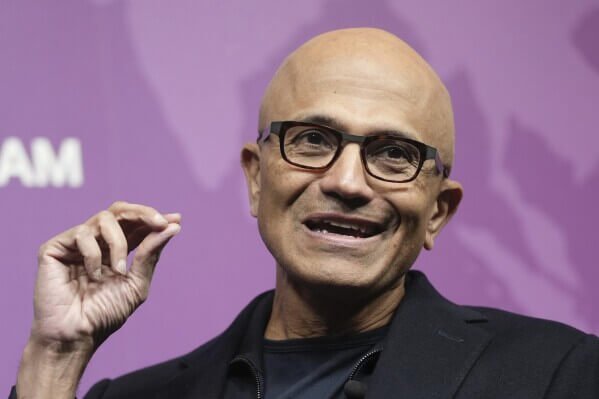Microsoft CEO Satya Nadella recently spoke about Microsoft’s productivity paradox, a problem that is increasingly present in the company. In an interview with LinkedIn co-founder Reid Hoffman, Nadella explained how this paradox highlights the differences in expectations between managers and staff members about output at work.
85% of managers, according to Microsoft’s research, believed that their employees were working insufficient hours. Whereas the employees stated that they were overburdened and burnt out. The outbreak has resulted in an increase in the management of remote and hybrid work environments, which has presented a variety of challenges.
Nadella highlighted that the initial stage in resolving this issue is to abandon dogmas and assumptions. Rather, he advised businesses to leverage data-driven insights to gain a more comprehensive understanding of the productivity of their employees. He highlighted the importance of precise measurements and measurable objectives in order to assess actual progress. Emphasizing data can help businesses reduce the gap between the expectations of management and the realities of their employees, providing a more realistic perspective on the entire production process.
According to Nadella, the critical issue is the structural change that flexible work arrangements have brought about. Microsoft is just one of several companies that have struggled with the shift to hybrid work models, which incorporate remote work schedules. When managers cannot actively oversee staff, it might be challenging to evaluate productivity since it can breed mistrust. But there’s a growing need for remote workers to prove their worth, which might wear them out.
Nadella suggested that CEOs improve their interpersonal skills and communication to overcome these challenges. He wanted administrators to be honest when setting goals so he could make sure management and workers were on the same page. By creating objectives and performance criteria, firms may improve productivity and bridge management-staff gaps.
Nadella advocated for introducing workplace laws that balance worker well-being and productivity. He emphasized the importance of creating an environment at work where workers may flourish without getting tired. According to Nadella, such a structure will improve the efficacy, clarity, and confidence in the administration of diverse workforces.
Nadella makes a strong case that firms must use data and open communication to adapt to workplace changes. This solution can help Microsoft address the productivity conundrum and create more productive and healthy workplaces for all employees.












